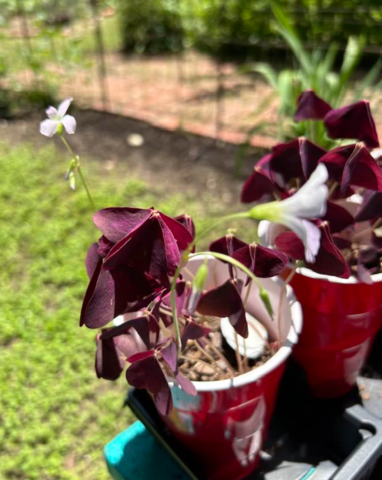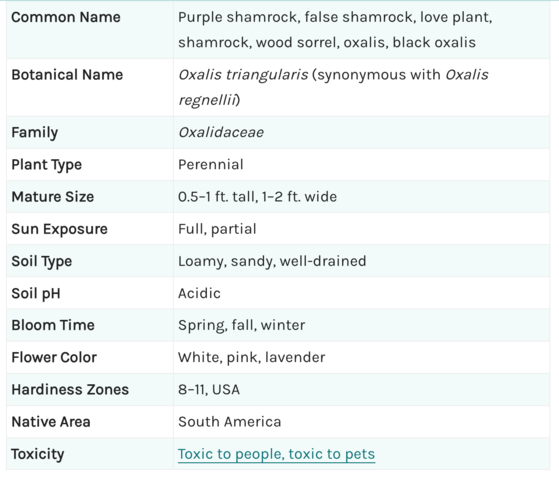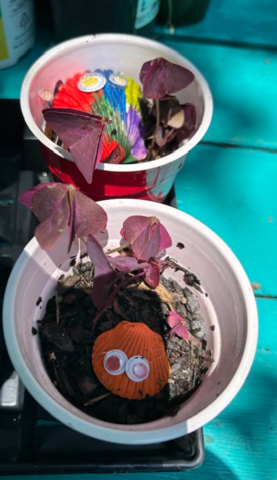
FREE PURPLE SHAMROCKS AT THE GARLAND COMMUNITY GARDEN
We thank our donors.
When I came down to the garden at about noon to water some new transplants, I saw that someone had donated about 125 little pots of purple shamrocks.
The purple shamrock, also known as Oxalis triangularis, is called the "love plant" because its heart-shaped leaves are said to symbolize love and fertility. This makes it a popular gift between romantic partners--somewhat odd considering that all parts of the plant are toxic to humans and animals.

Many of the plants are blooming--pink blossoms
_________________________________________________________________________
WARNING: THIS PLANT IS NOT HIGHLY RECOMMENDED IF YOU HAVE CHILDREN OR PETS.
Purple Shamrocks, or Oxalis triangularis, contain oxalic acid, a compound that can impact human health. When ingested, oxalic acid binds with calcium in the body, potentially leading to a drop in calcium levels and the formation of kidney stones.
Skin contact with Purple Shamrocks might result in irritation or allergic reactions. Symptoms can include itching, redness, and swelling. It's a real bummer, but wearing gloves can help avoid this itchy predicament.
____________________________________________________________________________

More about the Plant
Purple shamrocks are grown from bulbs, rather than seeds. The best time to plant is in the spring. Plant the bulbs with the narrower end facing up roughly 1 to 2 inches down in the soil. Space multiple bulbs approximately 3 to 4 inches apart.
It prefers sun to partial shade and needs four hours of sunlight
Purple Shamrock Plant is a rhizomatous herbaceous ornamental garden or houseplant in the wood sorrel family that is native to South America. The trifoliate leaves resemble a shamrock and can be green to variegated to deep maroon in color. The leaves close up at night or when disturbed. The white to pink 5-petaled flowers bloom in clusters in spring to summer on stems held above the plant and also close at night.
We don't know who our donors are but we think they are perhaps a scout troop as many of the pots have painted shells with google eyes.
